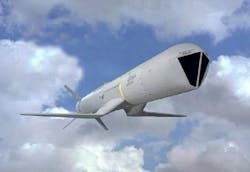Boeing chooses ACT to provide electronics thermal management technology for SLAM-ER missile guidance systems
ST. LOUIS – Smart munitions experts at the Boeing Co. needed electronics cooling technologies for the guidance systems on anti-ship and land-attack missiles. They found their solution from Advanced Cooling Technologies Inc. (ACT) in Lancaster, Pa.
Officials of the Boeing Defense, Space & Security segment in St. Louis have awarded a $7 million contract to ACT to manufacture a thermal solution for onboard guidance technology used on the Harpoon and SLAM-ER cruise missile systems.
Thermal management is a critical enabling technology as these systems become more capable and precise, ACT officials explain. Boeing and ACT have worked closely during design to optimize the solution for performance, mass, and space.
Related: The electronics design challenges of hypersonic flight
ACT's thermal management hardware will help maintain safe operational temperatures of the missile guidance systems, company officials say. "We've spent the past year working closely with the team at Boeing, prototyping and getting this innovative and highly reliable thermal solution where it needs to be for mass production efforts, says Greg Hoeschele, ACT's lead engineer of product development.
The Boeing AGM-84H/K Standoff Land Attack Missile-Expanded Response (SLAM-ER) is 14.3 feet long, 13 inches in diameter, and weighs 1,487 pounds.
The SLAM-ER an air-launched cruise missile is a derivative of the Boeing Harpoon anti-ship missile, which can attack land and sea targets as far out as 155 nautical miles. It relies on the Global Positioning System (GPS) and infrared imaging for its navigation and control, and can strike moving and stationary targets.
Related: Next-generation stealth missile seekers improve capability and affordability
SLAM-ER missiles obtained initial operating capability in June 2000. They can launch from the F/A-18 Hornet, F/A-18 Super Hornet, and the U.S. Air Force's F-15E Strike Eagle. The missile carries an 800-pound explosive warhead, and uses an inertial navigation system supplemented by GPS, with infrared homing terminal guidance.
ACT focuses on custom-design two-phase heat transfer thermal management solutions. The company's products include heat pipes, custom liquid cold plates, heat exchangers, and thermally enhanced wedgelocks. On this contract, ACT's product development team has scheduled first deliveries for 2023.
For more information contact ACT online at www.1-act.com, or Boeing Defense, Space & Security at www.boeing.com/company/about-bds.
